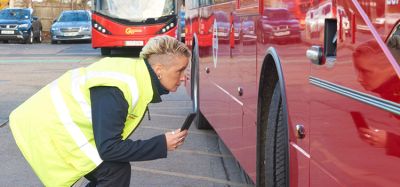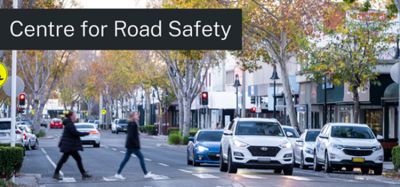A vision of variety in Denmark
- Like
- Digg
- Del
- Tumblr
- VKontakte
- Buffer
- Love This
- Odnoklassniki
- Meneame
- Blogger
- Amazon
- Yahoo Mail
- Gmail
- AOL
- Newsvine
- HackerNews
- Evernote
- MySpace
- Mail.ru
- Viadeo
- Line
- Comments
- Yummly
- SMS
- Viber
- Telegram
- Subscribe
- Skype
- Facebook Messenger
- Kakao
- LiveJournal
- Yammer
- Edgar
- Fintel
- Mix
- Instapaper
- Copy Link
Posted: 15 February 2008 | Svend Tøfting, Chairman, North Denmark Region, ITS Denmark | No comments yet
If more passengers are to use public transport, it is necessary to use ITS in a targeted way. In this article I will write about implemented and planned projects in the North Denmark Region and in the region’s capital, Aalborg.
Public transport in Denmark is currently under pressure to perform. More and more people have a car, and that in turn obviously means that many journeys nowadays are made by car. Today less than 20% of journeys are made by bus.
If more passengers are to use public transport, it is necessary to use ITS in a targeted way. In this article I will write about implemented and planned projects in the North Denmark Region and in the region’s capital, Aalborg. Public transport in Denmark is currently under pressure to perform. More and more people have a car, and that in turn obviously means that many journeys nowadays are made by car. Today less than 20% of journeys are made by bus.
If more passengers are to use public transport, it is necessary to use ITS in a targeted way. In this article I will write about implemented and planned projects in the North Denmark Region and in the region’s capital, Aalborg.
Public transport in Denmark is currently under pressure to perform. More and more people have a car, and that in turn obviously means that many journeys nowadays are made by car. Today less than 20% of journeys are made by bus.
Car traffic puts pressure on the environment and causes congestion on the roads. If we want better accessibility, less pollution, reduced energy consumption and to secure a sustainable development, then we have to move as many journeys as possible onto public transport or bicycles and make public transport as clean and energy-efficient as possible.
Over the years the strategy in Aalborg has been to use ITS to improve public transport. As part of this strategy, bus computers were installed in all buses. The bus computer contains a GPS to determine the position of the bus and a mobile phone GPRS module for communication. With this system, a dynamic information platform has been established which can be used by both passengers and drivers. The drivers receive, for example, continuous information on whether or not they are keeping to the timetable.
Better accessibility
There are several ways of encouraging more people to use buses. One of the most significant ways is to make sure buses have good accessibility. At most major crossroads with traffic lights in Aalborg, a bus prioritising system has been installed. When the GPS system registers that a bus, which is running late, is approaching, the green light is prolonged so the bus can get through the traffic lights. In doing so the buses will arrive earlier than normal – and the buses become a more attractive alternative.
Compact terminal
New information opportunities have also been used when building a compact terminal; where the bus routes do not have fixed bus stops. The passengers are informed on large screens about which buses stop where. The compact terminal takes up much less room than other terminals and this results in less distance for the passengers to walk.
Dynamic traffic information
If we want more people to travel by bus it is necessary to have dynamic traffic information. It is important that the passengers can plan their journey, both before and during, so they need regularly updated traffic information. This results in greater peace of mind and can result in more people using public transport.
Most buses in the region of North Denmark can be followed on the internet in real-time at www.busser.nu.
The 50 most important bus stops in the city of Aalborg have been equipped with electronic signs, and as something new, the public transport authority, NT, has introduced information about the actual departure time from all bus stops in the region on mobile phones.
Everybody can now receive “live” information on their mobile phones about the bus departure time from a bus stop. A system call NT follows live via satellite where the bus is and estimates when it will arrive at the bus stop. This is accessible for passengers from mobil.ntlive.dk
Any uncertainty from public transport results in the customers choosing the safer option, the car. Easily accessible real-time information reduces the uncertainty towards public transport, for example; Has the bus left? Will it arrive soon? Have I misunderstood the time table? Real-time information is given to the customers via the internet before the journey and on electronic screens and on mobile phones during the journey.
In the future, it will be supplemented with dynamic information on interruptions to the service, which is sent via a mobile phone to the customer. It will also be possible for the “journey planner to guide the customer” during the journey, which means that the journey planner keeps track of the travel options it has suggested to the customer and will suggest a changed travel plan, if interruptions occur while the customer is on a journey.
Planning of journeys
Today we have a national journey planner where customers have easy access (via internet, mobile phone or voice response) to plan journeys by all public transport in Denmark from address to address – including information on known interruptions. The journey planner combines all buses and trains and some ferries with cycling and walking. Work is underway to establish a combined journey planner for both cars and public transport. The journey planner must give comparable information on travel times including crowded roads, prices including all variable costs and impact on the environment by use of the two modes of transport. In this way, the customers have the option of choosing the environmentally friendly alternative.
In the future, the journey planner will be extended by a reservation interface for individual needs of modes of transport. When you search for a journey on the route planner you are offered a bus journey – if one fits. If there is no bus route, it will suggest a journey by one of the alternative modes of transport i.e. firstly a demand-response traffic bus route. If that is not available then a demand-response traffic taxi route and if that is not available either, then the passenger is passed on to the general area covering demand-response traffic taxi system including its booking system. The result is as much co-ordinated transport as possible – and cars with just one driver is limited.
New transport systems in rural areas
The possibilities of ITS make it possible to service rural areas in a completely different way. Even today there are areas where buses are completely replaced by demand-response traffic (DRT), and in other areas bus routes are replaced by DRT in evenings and weekends. A taxi pollutes less than the bus for the same distance, but further savings are made by IT systems continuously optimising the driving based on demands, so as a result fewer kilometres are driven.
There are other passenger groups which require public transport, such as the disabled, hospital patients, doctors, school children and teletaxis. When the abovementioned transports on demand are combined with a co-ordinated transport of these groups, the result will be further efficiency and gains to the environment.
Such a co-ordination requires large and elaborate IT systems. The gain is obtained by both having more passengers in the same car but also by the same car being used for several successive journeys in the same area, whereby many return journeys are saved.
Further improvements can be made by reorganising existing routes in rural areas. The fixed routes and timetables for ordinary bus service on smaller roads in rural areas have been replaced by buses/taxis on demand. This kind of transport connects with the regional routes on the main roads between the larger cities so it is possible for the passengers to change to these faster buses. Passengers not in a position to use the express buses will be transported by taxi or mini buses.
The goal is that everybody can easily order transport via their mobile phones and all transport system will be co-ordinated together.
This system of DRT taxies and buses was introduced in the North Denmark Region 15 years ago and has each year been extended to become a growing part of the traffic. In the same time use of ITS to optimise and coordinate this traffic has been developed and made more efficient.
Car sharing
Accessibility in cities would be improved, if there were fewer cars on the roads. It is therefore sensible if more people share a car, even if they do not drive it at the same time. When there are fewer cars on the roads, less unnecessary driving is spent looking for parking spaces. When a number of people share a new car, instead of each having their own old one, the pollution per driven kilometre is also less. Aalborg offers car sharing to everybody. IT booking systems via the internet contribute to making the service accessible and effective. An IT system with a chipcard in the cars make sharing it easy for the user.
The carrot and stick approach
Carrots only are not sufficient to move more passengers onto public transport – sticks are also needed. Firstly environmental zones in the town centres have been introduced, where particular polluting vehicles are prohibited. This is normally the case for old trucks. Another possibility is to have parking fees, which increase with time. This will encourage quick shopping trips in town and utilise parking areas better.
Finally, the environmental zones can be extended to actual road pricing where some cars do not have access, and where others have to pay – possibly according to level of pollution. This effective solution is, however, not close to realisation in Denmark in the coming years.
ITS is the future
There is no doubt that ITS will be utilised in an effective way in Denmark in order to promote public transport. It will change the transport opportunities offered to drivers considerably, it will improve accessibility, road safety and last but not least be beneficial to the environment.








